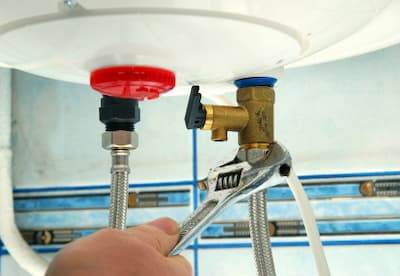Are you currently trying to find content on Tips on Maintaining a Water Heater?

Hot water is necessary for day-to-day convenience, whether it's for a revitalizing shower or cleaning meals. To guarantee your hot water system runs successfully and lasts much longer, normal upkeep is crucial. This short article gives practical pointers and understandings on exactly how to preserve your home's hot water system to prevent interruptions and pricey repairs.
Introduction
Maintaining your home's hot water system could seem daunting, however with a couple of simple actions, you can guarantee it runs smoothly for years ahead. This guide covers whatever from comprehending your warm water system to do it yourself maintenance suggestions and knowing when to hire specialist aid.
Value of Keeping Your Hot Water System
Normal upkeep not only expands the life expectancy of your warm water system however likewise ensures it operates effectively. Ignoring maintenance can result in decreased efficiency, greater power costs, and also premature failing of the system.
Indications Your Hot Water System Demands Maintenance
Recognizing when your hot water system needs interest can stop significant issues. Watch out for indicators such as irregular water temperature level, odd sounds from the heater, or corroded water.
Recognizing Your Hot Water System
Prior to diving right into upkeep jobs, it's practical to comprehend the fundamental elements of your hot water system. Typically, this includes the hot water heater itself, pipes, anode poles, and temperature controls.
Regular Monthly Upkeep Tasks
Regular month-to-month checks can help catch small issues before they escalate.
Flushing the Hot Water Heater
Purging your hot water heater eliminates debris accumulation, enhancing performance and prolonging its life.
Checking and Changing Anode Rods
Anode poles avoid rust inside the storage tank. Examining and changing them when worn is critical.
Checking and Readjusting Temperature Level Settings
Adjusting the temperature setups ensures optimum efficiency and safety.
Do It Yourself Tips for Upkeep
You can execute numerous maintenance tasks yourself to keep your warm water system in leading problem.
Checking for Leaks
Frequently evaluate pipes and links for leaks, as these can cause water damages and greater expenses.
Testing Stress Alleviation Valves
Checking the stress relief valve guarantees it functions properly and protects against too much stress build-up.
Insulating Pipelines
Shielding warm water pipes lowers heat loss and can conserve energy.
When to Call a Specialist
While DIY maintenance is helpful, some problems need professional proficiency.
Complex Concerns Requiring Specialist Aid
Examples include major leakages, electric issues, or if your water heater is constantly underperforming.
Routine Expert Maintenance Advantages
Professional upkeep can consist of complete evaluations, tune-ups, and guaranteeing compliance with safety and security criteria.
Conclusion
Regular maintenance of your home's hot water system is essential for effectiveness, long life, and cost financial savings. By adhering to these tips and knowing when to look for specialist assistance, you can make certain a trustworthy supply of hot water without unanticipated disturbances.
How to Maintain an Instant Hot Water Heater
Before tinkering with your hot water heater, make sure that it’s not powered on. You also have to turn off the main circuit breaker and shut off the main gas line to prevent accidents. Also turn off the water valves connected to your unit to prevent water from flowing into and out of the appliance. 2. When you’re done, you have to detach the purge valves’ caps. These look like the letter “T” and are situated on either side of the water valves. Doing so will release any pressure that has accumulated inside the valves while at the same time avoid hot water from shooting out and burning your skin. 3. When the purge valves’ caps are removed, you have to connect your hosing lines to the valves. Your unit should have come with three hoses but if it didn’t, you can purchase these things from any hardware or home repair shops. You can also get them from retail stores that sell water heating systems. Read the user’s manual and follow it to complete this task properly. When the hosing lines are connected, open the purge port’s valves. 4. You should never use harsh chemical cleaners or solutions when cleaning your unit. Make use of white vinegar instead. It should be undiluted and you’ll probably use about 2 gallons. 5. Now flush your water heater. This task should probably take about 40 minutes. We can’t give you specific directions for this because the procedure is carried out depending on the type, model and brand of your heater. With that being said, refer to the user’s manual. 6. When you’re done draining the unit, you have to turn off the purge port valves again. Remove the hosing lines that you earlier installed on each of the water valves. Put the valve caps (purge port) back in their respective places and be very careful so as not to damage the rubber discs that are found inside these caps. 7. Now that everything’s back in place, check your user’s manual again to find out how to reactivate your water heating system. 8. Once it is working, turn one of your hot water faucets on just to let air pass through the heater’s water supply pipes. Leave the tap on until water flows smoothly out of it. https://www.orrplumbing.com/blog/2014/september/how-to-maintain-an-instant-hot-water-heater/

I hope you liked our excerpt about How to Maintain Your Water Heater & Prolong its Life. Thanks for spending some time to read our content. Liked our blog entry? Please quickly share it. Let others find it. Bless you for being here. Revisit us soon.
Get Started